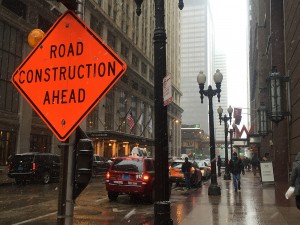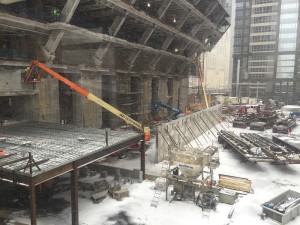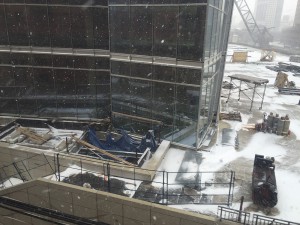By Kaitlin Schuler
Spending on construction in the United States rose by the largest amount in eight months in January, with growth in nonresidential projects counteracting a slight drop in residential construction spending.
According to a report issued Tuesday by the Department of Commerce, construction spending increased 1.5 percent from December to a seasonally adjusted $1.14 trillion for January 2016. Economists polled by Reuters had forecast total construction spending rising only 0.4 percent in January.
“This increase was above expectations for a more modest gain,” noted J.P. Morgan economist Daniel Silver in an online note, “and there were also upward revisions to the changes reported for December (from 0.1% to 0.6%) and November (from -0.6% to -0.5%).”
Total spending grew by 10.4 percent from $1.03 trillion a year ago, the highest annual spending level since October 2007.
Compared to month-over-month data, “January to January is actually a more reliable statistic, so overall it looks like 2015 was a good year,” DePaul University economics professor Thomas Mondschean said. “The report is definitely a positive indicator for the economy right now.”
In January, residential construction spending fell less than 1 percent to $438.96 billion from $439.02 billion in December. Nonresidential spending offset this with 3 percent growth in the same period to $701.88 billion from $684.48 billion. Residential numbers do not include rental, vacant and seasonal residential improvements.
“Businesses only put money into the construction of new factories or offices when they are confident that demand is strong enough to justify the expansion,” according to data provider Econoday’s website. “The same goes for individuals making the investment in a home.”
The Commerce Department report, released each month, measures the dollar value of new structure construction and improvements to existing structures for the public and private sectors. All categories, residential and nonresidential, grew from a year ago except public safety and water supply construction.
Other significant rate increases for the year include multi-family and single-family home improvements, with the demand for multi-family home construction increasing greatly. Multi-family numbers grew 30.4 percent to $59.76 billion from $45.82 billion a year ago, versus 6.6 percent to $230.05 billion from $215.75 billion for new single-family construction.
“Public construction seems to be growing more than private,” DePaul’s Mondschean said. “But we had a pretty mild January this year, and last year was not so mild, so I wonder if the increase in construction activity is due to the better weather this year.”
State and local spending increased 4.4 percent from last month, while federal spending rose 5.6 percent.
“The public construction spending data have been very strong lately, with increases of 4.5% reported for January and 3.3% reported for December,” Silver said. “We think public spending will likely continue to increase over time, but that these recent strong figures (which followed three straight monthly declines) likely overstate the underlying trend.”
With the exception of slight decreases in October and November 2015, total construction spending has been rising since June 2014.







